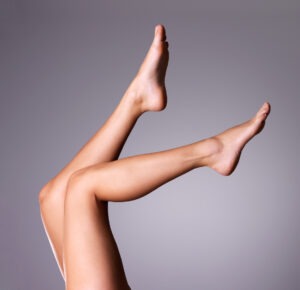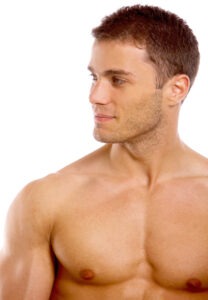 Rheumatoid arthritis refers to a chronic inflammatory condition that impacts the joint and may also lead to other problems.
Rheumatoid arthritis refers to a chronic inflammatory condition that impacts the joint and may also lead to other problems.
Sometimes rheumatoid arthritis may damage various body systems such as the lungs, eyes, heart, and blood vessels. The patient may even need corrective and cosmetic surgery in very severe cases.
In many cases, rheumatoid arthritis can impact the hands, wrists, and extremities. Patients who require surgical intervention may consider hand surgery and plastic surgery.
Board certified orthopedic surgeons Dr. Steven C. Thomas and Dr. Gregory T. Bigler provide treatments for the knee and shoulder to patients in Las Vegas, Nevada, and surrounding locations.
Causes
Rheumatoid arthritis is an autoimmune disorder. In this condition, the immune system mistakenly attacks the body’s own tissue. Osteoarthritis-related damage is caused by wear and tear while rheumatoid arthritis affects the joints. This leads to painful inflammation which may gradually cause bone erosion and joint deformity.
Rheumatoid arthritis-related swelling can also impact other body parts. Advancements in drugs have improved the treatment options to a large extent. But patients with severe rheumatoid arthritis can still develop physical disabilities.
Symptoms
Rheumatoid arthritis symptoms may include the following:
- Inflamed, tender, and warm joints
- Joint stiffness, which may be worse in the mornings or after periods of inactivity
- Fatigue, fever, and weight loss
In the initial stages, rheumatoid arthritis typically affects the smaller joints, specifically the joints that link the toes to the feet and fingers to the hand. Upon disease progression, these symptoms may also affect the elbows, wrists, hips, shoulders, and ankles. The patient usually experiences the symptoms in the same joints on either side of the body.
Rheumatoid arthritis can also impact non-joint body parts such as lungs, eyes, skin, kidney, heart, bone marrow, nerve tissue, blood vessels, and salivary glands.
Surgical Treatment
If these medications cannot adequately prevent or delay damage to the joint, the patient may require surgery to repair the damaged joints. Surgery can restore the ability of the patient to use the joint and may relieve pain and address deformities as well. One or more of the below procedures may be a part of rheumatoid arthritis surgery.
Synovectomy
This procedure removes the swollen joint lining. It can be performed on the knees, wrists, elbows, hips, and fingers.
Tendon Repair
Tendons surrounding the joint may loosen or tear due to swelling and joint damage. The surgeon will restore the tendons around the joint.
Joint Fusion
The surgeon may stabilize or realign a joint with surgical fusion. This procedure can offer relief from pain in cases where joint replacement is not an option.
Total Joint Replacement
The surgeon will eliminate the damaged portions of the joints and place a metal or plastic prosthesis in a total joint replacement procedure.
Thomas & Bigler Knee & Shoulder Institute, led by board certified orthopedic surgeons Dr. Thomas and Dr. Bigler, receives patients for orthopedic surgery from Las Vegas, Nevada, and nearby areas.
If you would like to schedule an appointment or learn more about the Knee and Shoulder Institute procedures & treatments performed by Las Vegas, Nevada board-certified surgeons Steven C. Thomas, MD and Gregory T. Bigler, MD. Contact the office today click here.

 The biceps tendon attaches the biceps muscle to the bone. It involves two tendon attachments in the
The biceps tendon attaches the biceps muscle to the bone. It involves two tendon attachments in the  Accurate diagnosis of rotator cuff injury and timely treatment is important to ensure that further damage is avoided. Advanced imaging and other diagnostic solutions are available today for correct diagnosis.
Accurate diagnosis of rotator cuff injury and timely treatment is important to ensure that further damage is avoided. Advanced imaging and other diagnostic solutions are available today for correct diagnosis.  Rotator cuff tendinitis, or tendonitis, impacts the muscles and tendons that enable a person to move their
Rotator cuff tendinitis, or tendonitis, impacts the muscles and tendons that enable a person to move their  A rotator cuff is a group of tendons and muscles that surround the
A rotator cuff is a group of tendons and muscles that surround the  Severe
Severe  A separated shoulder refers to a condition that causes the clavicle (collarbone) to detach from its normal attachment on the shoulder blade. This condition is frequently misunderstood as a
A separated shoulder refers to a condition that causes the clavicle (collarbone) to detach from its normal attachment on the shoulder blade. This condition is frequently misunderstood as a  Rotator cuff treat treatment usually initiates with a significant effort at conservative therapy. The type of rotator cuff tear (acute versus longstanding), the size of the tear, and the patient’s activities will impact the effectiveness of nonsurgical treatment options.
Rotator cuff treat treatment usually initiates with a significant effort at conservative therapy. The type of rotator cuff tear (acute versus longstanding), the size of the tear, and the patient’s activities will impact the effectiveness of nonsurgical treatment options. 
